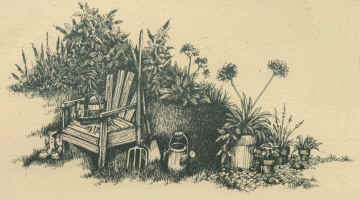|
Prune
Your Garden
-
Prune
the portions of your plants that are dead, diseased or damaged.
-
To
direct growth, lightly prune during the winter months before spring
growth begins.
Manage
Pests
-
Begin
by using simple physical control measures, such as hand picking and
setting traps and barriers.
-
Try
biological control measures by introducing predatory insects, such as
aphid-eating green lacewings or bacterial insecticides, such as Bacillus
thuringiensis.
-
As
a last resort, control with chemicals. Choose the least toxic
product available (e.g., insecticidal soaps, horticultural oils, silica
gel, diatomaceous earth, pyrethrin-based insecticides).
Weed
Fertilize
-
Fertilize
as needed, when new growth is less than normal of if color appears pale.
-
Try
using a low-nitrogen fertilizer. (Nitrogen stimulates growth
creating a demand for more water.)
-
Consider
using organic fertilizers, try a slow-release fertilizer.
Mow
and Aerate Lawns
-
Aerate
and dethatch as necessary.
-
Raise
the mowing height of your lawn to encourage a more extensive root
system. For bluegrass lawns set your lawn mower to cut 2 to 2˝
inches high; for tall fescue set at 2˝ to 3 inches.
Check
Your Irrigation System
-
Periodically
check your sprinklers and drip emitters for clogging and malfunctioning
(e.g., broken or misdirected heads) and clean the filters twice a year.
-
Look
for wilting trees, shrubs and ground covers and for dry spots in the
lawn indicating inadequate water coverage.
-
Look
for leaks and repair them immediately.
|
|
